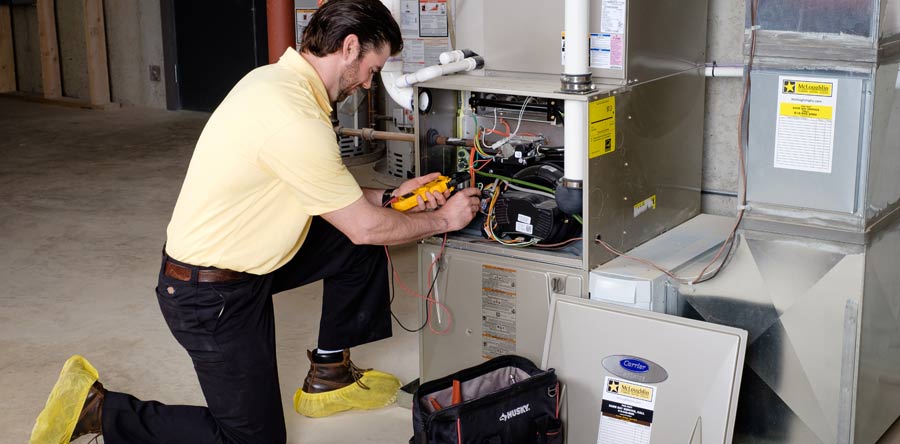
An efficient heater plays an essential function in keeping your home warm and relaxing throughout the winter. But how do you know which kind of heating system is best? If you wish to replace your old heater or purchase a new heater online, this 6-step guide can assist you. Let's start with how a heater works so you can get a better understanding of the procedure and your needs.
WHAT IS A FURNACE?
A heater is developed to heat your house's air utilizing different kinds of fuel. It blows hot air through ducts to deliver warm air through grills or air registers. Furnaces are likewise called a forced warm-air or ducted warm-air distribution system, and they heat up a home using among these sources:
- Electrical energy
- Fuel oil
- Gas
These 3 sources can warm a house rapidly, and they all have their pros and cons. For instance, depending upon the location in which you live, one source may be less expensive than another. In basic, gas is the least expensive heating source.
6 STEPS TO BUYING THE BEST FURNACE FOR YOUR HOME
These actions will help you narrow the variety of heater alternatives. When shopping for a furnace, think about these six points:
1) Climate
Depending upon your area, some heater types work much better than others. Pick a heater including an ENERGY STAR certification for the very best performance and savings.
Moderate Climates: The Majority Of the South, Southeast, and Southwest regions of the United States rarely experience freezing temperatures. To this end, furnaces in milder areas have a "U.S. South" ENERGY STAR stamp. To meet the standard, gas heating units must have an annual fuel utilization performance (AFUE) of at least 80. These heating systems are designed specifically for milder zones and are more effective than basic furnaces. Heatpump are likewise a good option for this environment due to the fact that they minimize energy costs and work best in locations where the temperature level never reaches below 40 degrees.
Cold and Freezing Climates: The rest of the U.S. requires more heating power during the winter. As such, heating system effectiveness standards in these locations will be more stringent. To minimize your heating costs, search for an ENERGY STAR label for heaters that have an AFUE ranking of 90 or greater.
2) Heater Type
Gas furnaces represent the most popular type and come in three forms:
Single-Stage Gas Furnaces: A standard single-stage gas heater includes a gas valve that opens and closes. The gas flows at only one rate: high. Single-stage gas heating systems run at around 80% AFUE and are best for milder climates.
Two-Stage Gas Furnaces: A two-stage gas heater can change the circulation of gas from low or high for much better performance. A house's thermostat interacts with the heater to control temperature.
Regulating Gas Heating systems: This type of gas heater manages heat the most specifically of all the gas heater types. It is ideal for cooler environments to manage space temperatures effectively and uniformly.
Likewise available are electric and oil furnaces:
Electric Furnaces: While not as economical as gas heating systems, electrical heaters are still popular. They warm air by moving it over electrical coils and distributing the warmed air throughout your home.
Oil Heaters: These heaters are best for homeowners who do not have access to other kinds of fuels.
3) Fuel Source
Gas is the most popular fuel source because it is readily offered and typically the least costly. Gas furnaces are typically cheaper to purchase and install, and they are less unpleasant than oil heaters.
If gas supply is not readily available in your location, oil is the next finest choice. Finally, electric heaters are the most affordable to purchase and set up, but they do not heat big homes effectively and will cost the most to operate in electrical costs.
4) Energy Effectiveness
The Federal Trade Commission needs all brand-new heaters show AFUE rankings so consumers can compare their efficiency. The AFUE represents the annual heat output of the heater compared to the overall annual energy taken in. An AFUE of 90% means https://furnace-repair-calgary.ca that 90% of the energy warms the house and the other 10% gets away. AFUE does not include any heat lost through the duct system.
Although a high score is important, the expense of the fuel source may eliminate from the heater's effectiveness. The most efficient furnace is an electrical one. An electric furnace barely loses any energy: in reality, the AFUE rating for an electrical furnace is 95% -100%. In spite of the high-efficiency level, electricity is more pricey, making electrical heaters the most costly to run.
When it is time to buy heater online, select a high-efficiency furnace with an AFUE of over 90% in extremely cold environments. In milder locations, select one with an AFUE of 80%. The rate difference in between the 2 kinds of heaters can be $1,000 or more, which may not be worthwhile in a milder location.
5) Size
Installing an effectively sized heating system is the essential to warming your house. If your heater is too small, it will not warm your entire home. A furnace that is too big will waste money on fuel by producing heat you do not require. Numerous elements identify the best size: square video, ceiling height, number of windows, and insulation. Ask a HEATING AND COOLING professional for an in-house evaluation to determine the best size for your house.
6) Heating System Evaluations
When choosing where to buy a heating system, inspect reviews through Consumer Reports and the Bbb to see how customers respond to problems and complaints. If you are having the heater professionally set up, check evaluations for the HVAC professional also.